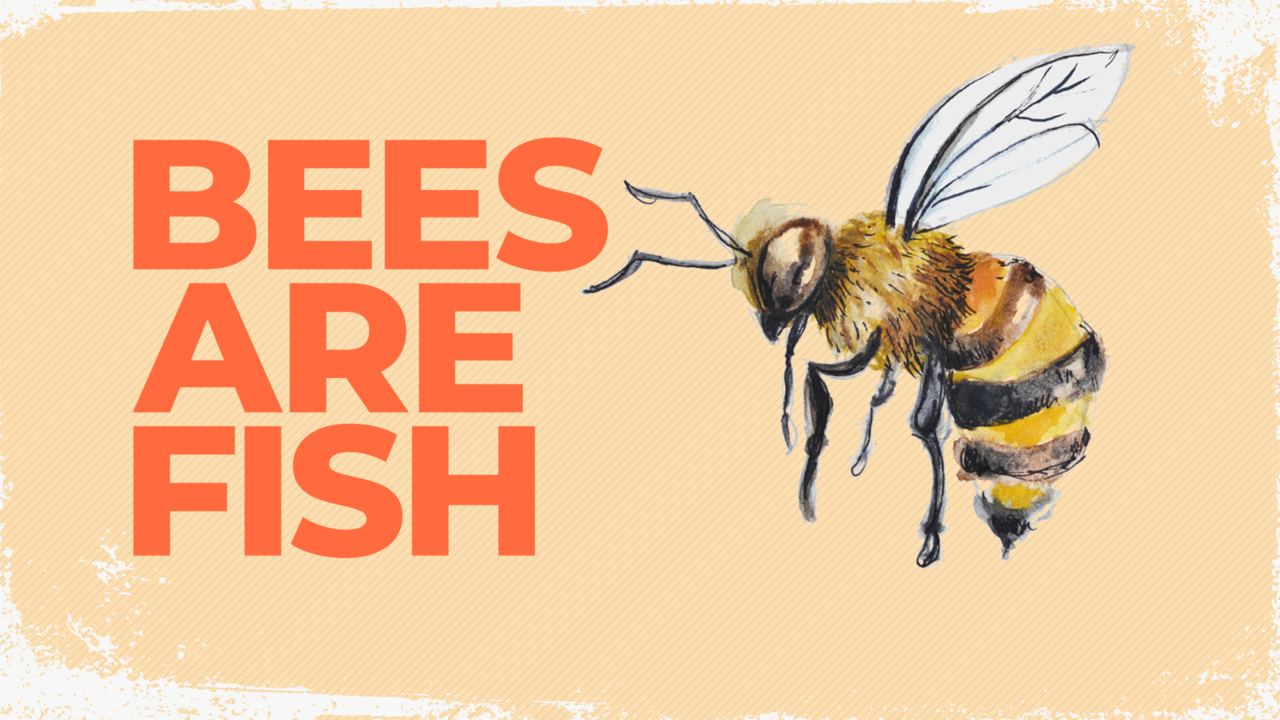
FOUR SPECIES OF BUMBLE BEES ARE NOW FISH UNDER CALIFORNIA LAW. CLASSIFYING THESE BEES AS FISH ISN’T A CONSPIRACY TO FUNDAMENTALLY ALTER BASIC SCIENTIFIC FACT. IT’S A LEGAL MANEUVER TO PROTECT SOME POTENTIALLY ENDANGERED INSECTS.
LET ME EXPLAIN.
NOT ALL BEES IN CALIFORNIA ARE CONSIDERED FISH, JUST FOUR SPECIES OF BUMBLE BEE. THOSE SPECIES ARE NOW ELIGIBLE FOR PROTECTION AS ENDANGERED OR THREATENED “FISH” AFTER A CALIFORNIA APPEALS COURT REVERSED A LOWER COURT’S RULING.
WHY ARE THE COURTS INVOLVED IN DECIDING WHAT IS AND ISN’T A FISH?
IN 2018—THE CENTER FOR FOOD SAFETY, THE XERCES SOCIETY FOR INVERTEBRATE CONSERVATION AND THE DEFENDERS OF WILDLIFE PETITIONED THE CALIFORNIA FISH AND GAME COMMISSION TO ADD FOUR KINDS OF BUMBLE BEES TO THE STATE’S ENDANGERED SPECIES LIST.
THE GROUP BASED THEIR ARGUMENT ON ONE SECTION OF THE CALIFORNIA ENDANGERED SPECIES ACT WHICH DEFINES FISH AS A “WILD FISH, MOLLUSK, CRUSTACEAN, INVERTEBRATE, AMPHIBIAN, OR PART, SPAWN, OR OVUM OF ANY OF THOSE ANIMALS.”
BASICALLY THE GROUP ARGUED THE WORD INVERTEBRATE MEANS ANY INVERTEBRATE, NOT JUST THE ONES THAT STICK TO WATER.
CALIFORNIA FISH AND GAME THEN PUT THE BUMBLE BEES ON A LIST OF CANDIDATE SPECIES ELIGIBLE FOR PROTECTIONS.
SOME AGRICULTURE GROUPS IN CALIFORNIA DIDN’T LIKE THAT AND SUED. THE CALIFORNIA SUPERIOR COURT RULED IN 2020 THAT BEES COULDN’T BE CALLED FISH. BUT CALIFORNIA’S 3RD DISTRICT COURT OF APPEALS REVERSED THAT DECISION. SO THE BUMBLE BEES ARE BACK TO BEING FISH.
IN WRITINGS FOR THE COURT, ASSOCIATE JUSTICE RONALD ROBIE SAID “WHILE FISH IS COMMONLY UNDERSTOOD TO REFER TO AQUATIC SPECIES, THE TERM OF ART EMPLOYED BY THE LEGISLATURE IS NOT SO LIMITED”
THIS ISN’T THE FIRST TIME A LAND-BASED ANIMAL WAS CLASSIFIED AS A FISH UNDER THE CALIFORNIA ENDANGERED SPECIES ACT. IN 1980, THE TRINITY BRISTLE SNAIL WAS ALSO AWARDED PROTECTIONS USING THE SAME INVERTEBRATE-ARGUMENT.






